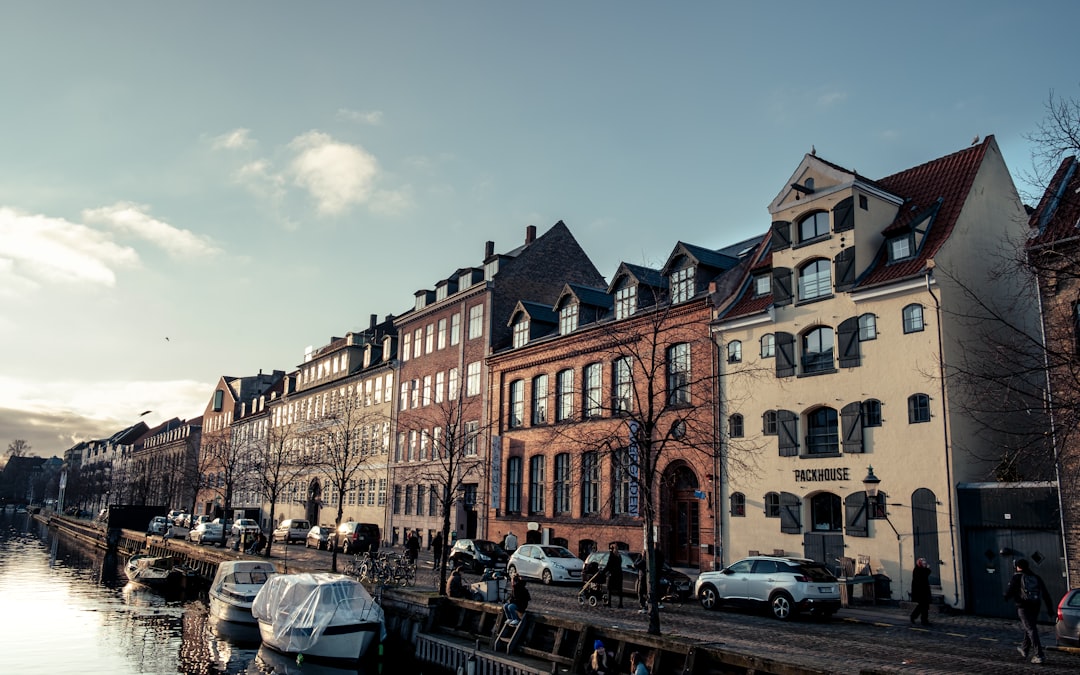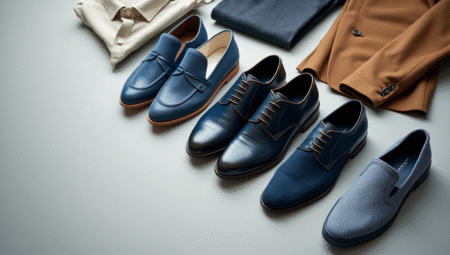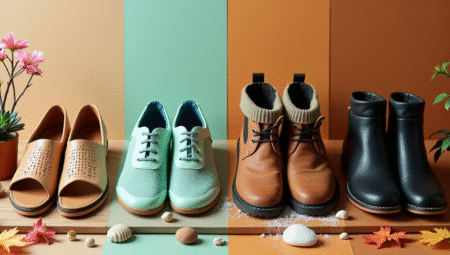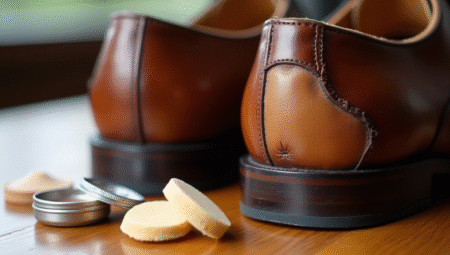The spores of mold fungi are constantly floating in the air even if we don’t notice them, and when they find a suitable environment, they multiply rapidly. Especially leather, synthetic, and cotton materials are all vulnerable to this invisible enemy.
This situation affects not only the appearance of our shoes but also their health. Mold causes an unpleasant odor in shoes, and this smell can sometimes spread as far as the basement. Moreover, both shoes made of natural leather and those made of synthetic materials are at risk.
In this article, we will examine in detail how we can protect our shoes from mold, how to clean existing mold, and most importantly, how to prevent this problem. We will share practical solutions and surprising facts recommended by experts.
The Science of Mold: Why Does It Form in Your Shoes?
Mold fungi are like hidden guests ready to come to life in our shoes. These microscopic organisms can appear at the most unexpected times and take over our shoes. So how do these invaders find life in our shoes?
The life cycle of mold fungi
Mold fungi are organisms with thousands of species that reproduce through spores. These spores are so small they are invisible to the naked eye and constantly circulate in the air. In fact, even the air we breathe contains mold spores. Mold fungi cannot produce their own food; they meet their nutritional needs by decomposing surrounding materials. When they find suitable conditions on our shoes, they begin to multiply rapidly.
The most interesting part of this life cycle is that mold spores can remain dormant for a long time. However, once they find the right environment, they immediately come to life. Sometimes the first sign can be a bad odor, as some fungi produce volatile metabolites that emit foul smells.
The role of humidity and temperature in mold formation
The two most critical factors in mold formation are humidity and temperature. Ideal living conditions for mold spores are as follows:
- Temperature between 10–35°C (ideally 20°C and above)
- Relative humidity over 70%
- Dark environments with poor air circulation
Interestingly, the level of relative humidity directly affects the rate of mold growth. When the relative humidity is between 90–100%, mold can grow in just two days; at 80%, it takes 10 days, and at 70%, it takes 100 days. Therefore, damp shoes stored in a closet create a perfect environment for mold fungi to proliferate quickly.
Susceptibility of shoe materials to mold
Not all shoe materials are equally vulnerable to mold. Leather shoes, due to their natural structure, provide an ideal food source for mold. Both the leather itself and the materials used on it are nutritious for mold. Additionally, leather is semi-permeable and allows water vapor to evaporate from the foot.
On the other hand, shoes made of synthetic materials are not completely immune to mold. Compared to leather, synthetic materials are less permeable to water vapor. This leads to the accumulation of moisture inside the shoe due to foot sweat, which triggers mold growth.
Humid climates and rainy weather can especially cause mold formation and structural deformations in leather shoes. Therefore, keeping our shoes dry is vital not only for appearance but also for durability.
Mold Issues in Different Types of Shoes
The type of material directly affects your shoes’ relationship with mold fungi. Each type of shoe faces different mold problems due to its structure and requires specific care methods.
Signs of mold in leather shoes
Leather shoes, because of their natural composition, create an ideal living space for mold. On leather surfaces, mold usually appears as white, green, or black spots and can spread quickly if untreated. Signs of mold formation in leather shoes include:
- White, green, or black spots on the surface
- Changes in leather texture and a rough feel
- Noticeable mold odor
- Loss of leather flexibility and cracking
Leather shoes are very prone to mold when stored for long periods or kept in damp environments. Especially before storing leather shoes for extended periods, they should be nourished with leather cream and coated with a protective spray.
Types of mold found in athletic shoes
Scientific studies have shown that up to 15 different types of fungi can be found in athletic shoes, including Acremonium, Alternaria, Aspergillus, Cladosporium, Fusarium, Penicillium, Phoma, and Trichophyton. Among these, Cladosporium dominates in terms of colonies, and Penicillium in terms of species diversity.
The inner structure of athletic shoes, combined with the heat and moisture caused by sweating, provides a favorable environment for fungal spores to multiply. However, since athletic shoes are more suitable for machine washing, regular cleaning and maintenance can prevent mold problems.
Mold formation in fabric and suede shoes
Suede and fabric shoes require special attention due to their delicate structures. These materials easily absorb moisture and, if they remain damp for long periods, become prone to mold formation. In suede shoes, mold causes discoloration and texture loss, while in fabric shoes, it creates stains and odor issues.
For suede shoes, waterproof sprays are recommended as a preventive measure. Additionally, it is important to regularly ventilate and store fabric and suede shoes in dry environments.
Mold resistance in synthetic material shoes
Shoes made of synthetic materials are more resistant to mold compared to natural alternatives. Modern synthetic shoe materials often have antibacterial and antifungal properties. These shoes are less porous and absorb less moisture due to their structure.
Nevertheless, synthetic shoes are not entirely immune to mold. Especially if they are not adequately ventilated or stored in damp environments, mold can still form. Therefore, all types of shoes should be regularly aired out and stored under dry conditions.
Surprising Mold Triggers
Our daily habits and overlooked small details can be the biggest triggers of mold formation in our shoes. Interestingly, some factors that facilitate the growth of fungi may be far more surprising than we think.
The effect of foot sweat on mold formation
Our feet have more sweat glands than other parts of the body, which is why they sweat more. The production of isovaleric acid from sweat and bacteria on the feet causes both bad odor and mold development. Especially shoes that remain in enclosed environments for long periods become ideal environments for fungi to proliferate due to the moisture from sweat.
Shoes made from non-breathable materials like synthetic leather worsen this issue. These shoes block the foot’s natural air circulation, trapping sweat inside. The moisture and heat trapped inside the shoe create ideal conditions for mold fungi to reproduce (relative humidity above 75% and temperatures between 25–35°C).
Improper drying techniques
The way we dry wet shoes can unknowingly trigger mold formation. A common mistake after a rainy day is placing shoes on radiators or drying them with a hairdryer. However, this method can cause the leather to harden and crack over time.
Instead, placing newspaper inside wet shoes to absorb excess moisture and allowing them to air-dry naturally is more appropriate. Also, wearing the same shoes every day is a bad habit because shoes need at least a day of rest to dry completely.
Consequences of storage mistakes
One of the most common triggers for mold formation is improper storage techniques. Storing shoes in plastic bags is one of the biggest mistakes that accelerate mold growth. Plastic traps moisture and creates an ideal breeding ground for mold.
Additionally, putting shoes away in a closet without cleaning them is a major risk. Dirt and sweat accumulated in uncleaned shoes allow mold spores to multiply during storage. Therefore, always storing shoes clean and completely dry is of great importance. Cardboard boxes or cloth bags are ideal storage options as they help maintain moisture balance.
Effective Mold Cleaning Methods
There’s no need to panic when faced with moldy shoes. Many effective cleaning methods exist, and with the right techniques, your shoes can be saved. Sometimes, even household materials can yield surprising results.
Removing mold with natural cleaners
Natural cleaners offer effective and environmentally friendly solutions. White vinegar, due to its antibacterial properties, kills fungal spores and eliminates odors. It should be diluted with water at a 1:1 ratio and used to gently but thoroughly wipe the entire shoe. Then dry with a paper towel and let the shoes air-dry outdoors.
Baking soda is also a powerful tool in fighting mold. It absorbs bad odors and helps prevent mold formation. Especially for suede shoes, using a dry brush and baking soda is an ideal solution.
If mold has formed on shoes that have been stored in closets for a long time, using glycerin is quite effective. You can soak a cotton pad in glycerin and gently wipe the moldy areas. Additionally, tea bags, talcum powder, or baking powder can help neutralize odors.
Chemical solutions and their effects
Chemical solutions are powerful, but using inappropriate chemicals can damage shoes. For suede shoes, vinegar is not suitable; instead, alcohol or diluted ammonia water should be used. Applying antibacterial spray to the inside of the shoes eliminates both mold and odor.
Chemical cleaners should be used in well-ventilated areas, preferably outdoors. This minimizes the risk of poisoning. Those who want to ensure the mold is completely killed can place their shoes in the freezer for a few hours—low temperatures kill most fungi.
Professional cleaning services
For those who don’t want to use DIY methods, professional cleaning services are a good alternative. Some shoe cleaning services provide sterilization and disinfection for shoes. This process takes a few minutes and eliminates nearly all fungi.
You can use a courier service within Istanbul or Yurtiçi Kargo from outside Istanbul to benefit from professional cleaning services. Experts apply the necessary procedures to restore your shoes to their original appearance.
After cleaning, drying shoes naturally in the open air, away from direct sunlight, is the healthiest method. Keeping them away from direct heat sources like radiators prevents damage to the shoes.
Conclusion
Mold formation in our shoes is a more complex and serious issue than we think. However, with the right knowledge and proper precautions, we can easily solve this problem. Moisture control and regular ventilation stand out as the most effective methods for preventing mold formation.
Regular maintenance is essential, especially to protect our leather shoes. Drying our shoes thoroughly after each use, storing them correctly, and cleaning them regularly are our strongest line of defense against mold fungi. In addition, storing shoes in cloth bags instead of plastic ones prevents mold formation in the long term.
In conclusion, to protect our shoes from mold, we must first understand the causes and then apply appropriate solutions. Acting immediately when mold is seen and applying the cleaning methods mentioned in our article will extend the life of our shoes and protect our health.




